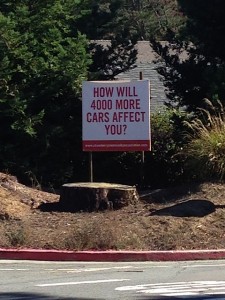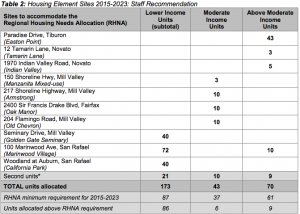While we’ve had a low profile since the Priority Development Area discussions, Strawberry Community Association has been quietly active on a number of issues. Strawberry continues to be an attractive target for development from a variety of sources, and we continue to watch for issues that can significantly affect the general density and traffic conditions of Strawberry, to make sure our community is represented in any decisions.
We only get the outcomes we want if there is a lot of community involvement. Most of these items don’t require any action right now, other than learning about them and forming your own opinion. But when times come for action, we need each and every member of the community to participate, regardless of your perspective.
We’re beginning this monthly newsletter with quick summaries of status and next steps on these and other items, and we’ll begin public meetings (monthly or quarterly) to provide a forum for discussion of them, for those interested.
To contact or join SCA, click “Contact” on the top menu and fill out the form that appears. Or, email us at StrawberryCommunityAssociation@gmail.com – one of our members will get back to you quickly!
Here’s a quick rundown of some of the issues we’ve been engaged in.
Seminary Development/Branson School – There have been no new public developments from either Fasken Trust or Branson, though Branson continues to privately express confidence in their relocation to the Seminary campus. We are equally confident that the current community plans do NOT provide for a private high school, and it will be important to make sure that our county representatives recognize this as well. If you want to get more engaged in understanding the issues with the Seminary development, contact the Seminary Neighborhood Association, who have been spearheading the effort to prevent overdevelopment of the Seminary property over the last five years, at www.SeminaryNeighbors.com, or contact us by selecting “Contact” on the menu bar and filling out the form, or emailing us at StrawberryCommunityAssociation@gmail.com.
Belvedere Place/Marin General Hospital -Approval of zoning changes for Marin General Hospital to begin leasing almost half of Belvedere Place (the large office building behind In-n-Out Burger) were pushed back by the Board of Supervisors, amidst significant local concerns over traffic impact. The BOS gave those parties an additional 3 months to provide an accurate traffic study. After this proposal’s 2 year submission process – and despite the Planning Commission approving the plan without ever seeing a traffic or parking study at all – the combination of community protest, a CalTrans request for a “peer review” of the latest parking study, and concern expressed by the City Planner from Mill Valley made it too awkward for the Board to approve the proposal.
This outcome clearly demonstrates the value of community engagement – we raised concerns to our Supervisor about the grossly inaccurate traffic study and the inexcusable approval of the Planning Commission, and showed up to voice these concerns at multiple Board of Supervisor meetings – making it difficult for the Board to approve the changes, though they clearly wanted to. The Supervisors granted an additional 3 months for the parties to provide an adequate peer-reviewed traffic study. Marin General representatives indicated that they would not continue to pursue this expansion; however, we need to be aware that they may continue to pursue this option despite these statements.
Medical Marijuana – County Development staff provided a proposal to the Board of Supervisors (at the Board’s request) for approval of medical marijuana dispensaries in Marin, with the suggestion of one (1) in each of Southern, Central and Northern Marin, complete with specific location recommendations. Two of those recommended locations for Southern Marin are in Strawberry, near the Seminary/101 interchange, and near the Reed/Redwood intersection. Community members argued that very little due diligence has been provided for the impact of a medical marijuana dispensary (as well as the appropriateness of it on or near Rec Board land), while advocates argued passionately for the relief that readily available medical marijuana dispensaries would provide. The Board voted to move forward with the proposal, which doesn’t yet identify the process or the locations of approving the dispensaries. This process continues to bear watching. If you’re interested in this,please contact us by selecting “Contact” on the menu bar and filling out the form, or emailing us at StrawberryCommunityAssociation@gmail.com.
AHCD – In keeping with the recent Levine bill that redefines Marin as a “Suburban” county rather than “Metropolitan,” the Board of Supervisors voted to reduce the default density of Affordable Housing Combining Districts in Marin County (of which there are three, including the Seminary) from 30 units per acre to 20 units per acre, over the near-unanimous opposition of the Planning Commission. Despite protests from members of the Strawberry community that the AHCD designation is no longer appropriate for the Seminary property – it’s a tool for use with the Housing Element, which no longer lists the Seminary – the Board of Supervisors voted to keep the designation applied to the Seminary. Why does this matter? This designation is important because it is a tool to encourage higher densities and density bonuses. There’s no current activity on this front, but we should all be aware of the Planning Commission’s process and problems, as well as the Board of Supervisors position on this issue.
BevMo – Beverages & More is proposing to move into the former Ideal Stationers location in Strawberry Village. They recently presented their plans to the Strawberry Design Review Board. At that review, the SDRB rejected the application based on a lack of parking and traffic studies which had not been provided. As the SDRB is an advisory board, BevMo may return with those studies, or may go directly to the Planning Commission for approval. Given the Planning Commission’s historical lack of diligence on any Strawberry-related issue before it, concerned community members will likely need to comment and/or appear at that hearing. If you’re concerned and want to get involved, please contact us by selecting “Contact” on the menu bar and filling out the form, or emailing us at StrawberryCommunityAssociation@gmail.com.
Seminary/101 Interchange – Changes are being discussed between the county, CalTrans and the Transportation Authority of Marin to revise the interchange, adding bike lanes (for a short distance), eliminating commuter parking, implementing metering lights, and modifying traffic patterns. This project has been delayed until Spring/Summer for administrative reasons, but there are concerns about the impact of metering lights on Strawberry surface streets; the impact of bike lanes on the width of the car lanes; the effect of bike lines just around the interchange (but not extending farther down the frontage road; the impact of removed commuter parking on Seminary street parking, and more. If you are concerned about any of these aspects of the project, please contact us by selecting “Contact” on the menu bar and filling out the form, or emailing us at StrawberryCommunityAssociation@gmail.com.
Mill Valley Traffic task force – Mill Valley city council is looking to improve their traffic issues, and have created a task force, calling for the inclusion of Supervisor Kate Sears and State Senator McGuire. This traffic solution will likely impact Strawberry residents as well, as proposals are made to modify traffic lights up to and including the 101/Tiburon Blvd interchange. Related, CalTrans has been proposing an additional traffic light on Tiburon Blvd and Knoll Rd, which has garnered the attention of Mill Valley, Tiburon and Supervisor Sears, but a forum hasn’t been provided for Strawberry residents to get involved. If you’d like to find out more about this process, please contact us by selecting “Contact” on the menu bar and filling out the form, or emailing us at StrawberryCommunityAssociation@gmail.com.
If you have a community issue you’re concerned about and would like to get on the community’s radar, please contact us and let us know. We’ll be publishing this newsletter monthly (at least) and arranging public meetings quarterly (at least) to make sure that we all have the opportunity to be informed and participate in what’s happening around us.



